Categories
Latest Updates
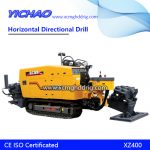
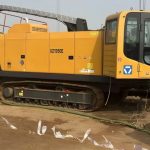
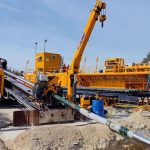
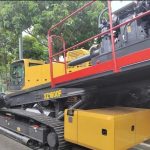
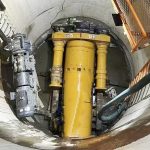
Although trenchless technology started later than other technologies, it has been developed by leaps and bounds in theory and construction techniques in recent years. Trenchless technology, as an extremely important construction method for laying pipelines, has its own unique advantages. It can avoid excavating the roadbed on the ground, and has the characteristics of low impact on related buildings and environmentally friendly characteristics. Therefore, its application in the construction of long-distance pipelines has been very extensive.
As the name implies, there is no need to excavate to pass through railways, highways, rivers and lakes or even under buildings. The upper soil layer of the pipelines laid by them has not been disturbed, so that the occurrence of pipeline deformation can be effectively avoided. Extending the life of pipelines is an environmentally friendly construction method, and this advantage is particularly evident in the construction of long-distance pipelines.
Utilizing various trenchless technologies for rock and soil drilling and excavation, a large degree of improvement has been made on the basis of traditional long-distance pipeline construction methods. The benefits of this improvement are obvious: it can effectively reduce Pavement excavation reduces construction workload, shortens construction period and construction cost; it can effectively reduce the impact on the environment; it can use relevant professional instruments to carry out pipe shed support, horizontal grouting precipitation and formation pollution treatment projects. However, as the old saying goes: “There is one advantage, there is one disadvantage.” Trenchless technology also has this characteristic and its cost is relatively high. Therefore, if this method is used for the construction of long-distance pipelines, a large amount of funds is required as support; The pipeline in the buried soil layer is broken, and the related repair or maintenance work is very difficult to carry out.
When designing trenchless methods, an effective design should be combined with the specific conditions of the project. Only in this way can the final trenchless method be found. However, some technical preparations are necessary: firstly, it is necessary to survey the current status of underground pipelines. Only after doing this can we accurately grasp the distribution of pipelines and some infrastructure; it is necessary to conduct related surveys and surveys on the topography of the construction area Only in this way can the drilling axis be designed and determined according to the actual situation; the last most important point is to conduct a geological site survey of the work area that needs to be drilled. Only in this way can the construction safety be guaranteed and the later safety hazards can be eliminated. This step is equivalent to the inspection and correction of the designed axis. If it is not done well, and the operation is carried out in an area with unstable geological structure, accidents are very likely to occur. Next is the preparation work at the construction site. The quality of the preparation work at the construction site directly affects the application effect of trenchless technology in the construction of long-distance pipelines, so it should not be ignored. The preparation work of the construction site should be carried out from the following aspects: the necessary and standardized inspection of the machinery on the construction site, the installation of relevant machinery and tools, and adequate preparation for the beginning of the construction; Diagonal drilling and straight drilling mainly include directional construction and work including aperture design, graded reaming, hole wall reinforcement, and pull-back reaming of the stretched pipe. These specific requirements include penetration in the specific In the working steps, the author will not repeat them here.
The realization of technology requires good equipment, and trenchless technology is no exception. Trenchless equipment is mainly composed of three systems. One is the navigation system composed of power supply, transmitter, console, receiver and remote display. The other is the engine, drill pipe, power tongs, hydraulic system, The execution system is composed of airborne mud pump and loading and unloading system. The third is a mud mixing system consisting of a mud tank, a high-pressure transfer pump and a high-pressure connecting pipe. These three systems cooperate with each other to jointly realize the application of trenchless technology in the construction of long-distance pipelines.
Laying new pipelines is an important link in the construction of long-distance pipelines. Next, the author will briefly talk about how trenchless technology is applied to the construction process. In fact, in the construction of long-distance pipelines, methods such as directional drilling pipe laying method, spiral drilling pipe laying method, directional drilling pipe laying method, push jacking pipe laying method, etc. can be used to lay new pipelines, so as to achieve ” Trenchless” effect. However, it is worth mentioning that the selection must be based on the specific conditions of the project, such as the geological environment of the construction area, the soil structure and the surrounding buildings, and other factors for comprehensive research and selection. Only in this way can the selection be made according to local conditions and the most appropriate selection. The method to get the best construction effect. For example, when laying lines on some complex geological and quicksand bottom layers, the pipe jacking method can be appropriately selected, which can effectively reduce the difficulty of construction to a certain extent.
When applying trenchless technology to the construction of long-distance pipelines, it is inevitable to encounter horizontal directional construction. As a major difficulty in construction, it often troubles many people. Next, the author will explain this problem. In the horizontal directional construction, the following matters need to be paid attention to: First, it is necessary to set the horizontal direction of the pipeline construction in combination with the hole drilled at the appropriate angle calculated in advance, which is the so-called pilot hole. Whether the guide hole calculation is reasonable or not directly affects the effect of horizontal directional construction. At this stage, when calculating the direction of the pilot hole in the petroleum and petrochemical industry, it is usually necessary to consider and analyze both the diagonal and the arc. Only in this way can the result of the calculation be more accurate. The second is to adjust the direction of the guide hole. This operation step is usually completed by the controller unit after the pipe construction drill bit is installed. Its function is to expand the diameter of the hole completed by the guide hole to the hole required for construction, so as to lay the foundation for the next installation of the pipeline and facilitate the subsequent construction. Then the expansion of the hole is officially carried out. The operation process at this stage is as follows: configure a reamer on the opposite destination of the pipe hole drilling rig, prepare the relevant instruments for the reaming work, and then proceed to the reamer and the drill pipe For the installation, start the drill to rotate, and at the same time drag it back into the pilot hole, so that the hole diameter can be effectively expanded. Finally, after these procedures are completed, the pipe can be dragged back into the drilled hole. And the drill rod is arranged at one end of the reamer, and the other end of the drill rod is connected to the pipeline by an interface. In this way, the pipe can be better fixed, thereby effectively avoiding the occurrence of displacement due to the rotation of the reamer. It is worth mentioning that while expanding, we must pay close attention to the changes in the construction environment, so as to effectively avoid the occurrence of collapse or soil collapse. For example: The Liujiang directional drilling crossing project of the China-Myanmar pipeline is located in Liujiang County, Liuzhou City, Guangxi. This area is a karst landform area with karst caves and underground rivers. During construction, the construction technology in karst areas should be fully considered and pay close attention. Important parameters such as mud, pressure, torque, time, etc., to improve the drilling process in time.
The so-called pipe jacking construction refers to the laying of pipes through jacking force. While carrying out the pipe jacking construction, the pipeline should be deployed at the same time. Only in this way can the construction efficiency and effect be effectively improved. The more commonly used pipe jacking construction technology at this stage is the construction method of mud-water balance jacking. The steps are as follows: the working shaft is closed and the door is removed, the head of the roadheader is pushed in, and a large amount of mud is injected to balance the pressure difference. When using it, attention should be paid to avoid excessive excavation speed, otherwise it will cause the nose to rotate and bury hidden dangers for accidents. In addition, a gradual approach should be adopted to prevent the occurrence of internal and external pressure differences and slurry running. For example: the China-Myanmar Pipeline Qinfang Branch Line South-North High-speed Pipe Jacking Project, where the upper part is covered with quicksand and the lower part is covered with hard rocks, which cannot be blasted and the collapse is serious. Therefore, it is necessary to improve the pipe jacking traversing process at any time in accordance with the actual situation of the site.
To sum up, although the trenchless technology has many advantages such as non-damaging the ground and being environmentally friendly, the construction technology it uses is still difficult. Therefore, in order to do a good job in the application of trenchless technology in the construction of long-distance pipelines, we must first have a clear and definite understanding of trenchless technology, and on this basis, analyze and summarize the specific construction steps. Give some precautions, only in this way can the construction efficiency be effectively improved.
